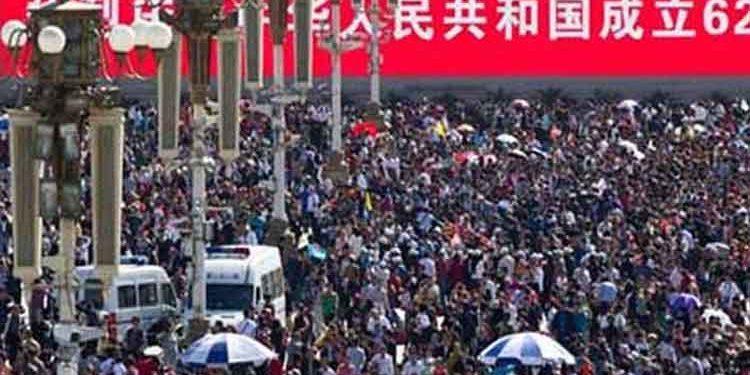Beijing: China’s population grew by 0.53 per cent to reach 1.41178 billion, up from 1.4 billion in 2019. Thus China maintained its status of the world’s most populous country. However, the numbers are expected to decline from early next year. This will certainly lead to labour shortages and a fall in consumption levels.
The seventh national population census was released by the Chinese government Tuesday. It said China’s population in all the 31 provinces, autonomous regions, and municipalities reached 1.41178 billion. The figures do not include Hong Kong and Macao.
Significantly, according to the data released by the National Bureau of Statistics (NBS), the new census figures reveal that the demographic crisis China faced was expected to deepen. This is because the population above 60 years grew to 264 million, up by 18.7 per cent last year.
“The further ageing of the population imposed continued pressure on the long-term balanced development of the population in the coming period,” the NBS statement said.
The proportion of people aged between 15 and 59 was 894 million. It was down by 6.79 percentage points from that in the 2010 census.
The growth rate of the population was 0.53 per cent annually on average in the seventh census conducted last year. This is in comparison to 0.57 per cent in the sixth census in 2010 and 1.07 per cent in the fifth census held in 2000.
The highest growth of China’s population of 2.1 per cent was registered in the census survey held in 1982. Since then population has continued to decline at a steady pace, which officials blamed on the decades-old one-child policy pursued by the ruling Communist Party of China (CPC) to check the population growth and keep it under a manageable level.
“Data shows that China’s population has continued to maintain slow growth in the past decade,” said Ning Jizhe, head of the NBS. The birth rates continued to fall as Chinese mothers gave birth to 12 million babies last year, down from 14.65 million in 2019, marking a 22 per cent decline year on year.
The gender ratio of China’s population also declined to 105.07 males to 100 females compared to 105.2 in 2010.
Last month, the NBS denied the Financial Times story that the population of the world’s second-largest economy fell last year, which would have been the first decline since 1961.
NBS said that although China reported population growth in 2020, the general declining trend was inevitable. China’s population is likely to start to decline as early as 2022, it said.
In view of the declining population, China stopped the one-child policy in 2016 and allowed two children. However, it has had very limited impact to halt the declining trend as few people came forward to have a second child.
He Yafu, an independent demographer, said there is no doubt that China will fully lift birth restrictions in the near future. This will be done to cope with the declining birth rate. The CPC is likely to remove its family planning policy as early as this autumn, he said.
The new census revealed that China’s population living in urban areas grew by 63.89 per cent, totalling to 901.99 million.
China, the second-largest economy, has conducted a national census every 10 years since the 1990s.






































